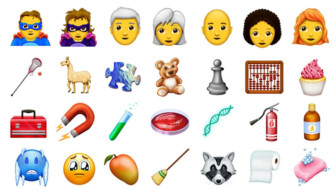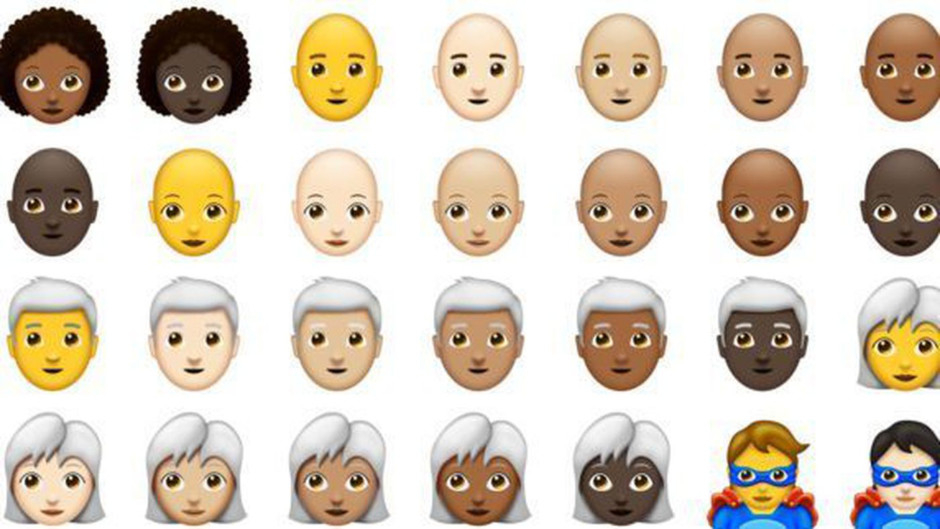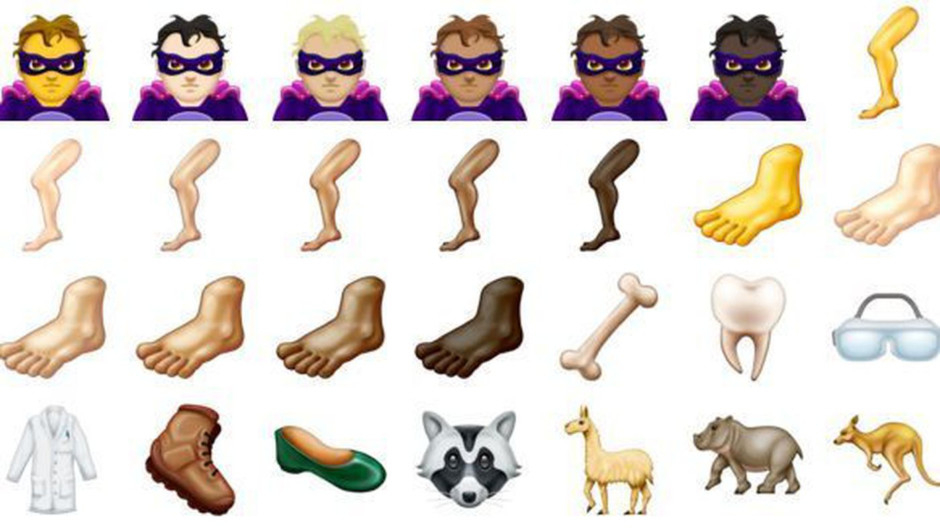
Redheads and curly-haired people, the Unicode Consortium has heard your pleas.
Those are just a couple of the 77 new characters approved to be added to Unicode’s next emoji update - 157 new characters if you count the variations in skin tones.
Bald people and people with white hair are the other new hair options. Jeremy Burge, the founder of Emojipedia and a member of the Unicode Consortium -- the shadowy organization that approves and encodes emojis -- said red hair and curly hair were the most requested new emojis. Like other “people” emojis, they’re available as men and women, and in a variety of skin tones.
Here are some you-ought-to-know-by-now things about emojis.
When was the emoji born?
In 1999. Emoji - cute pictograms that add emotional nuances to emails, texts and chats - have become something of a universal language. Back then, there were only 176; now, there are more than 2,600. They run the gamut of human experience, from joy and confusion to snowmen and witchcraft.
Who created the emoji?
Emoji had been created by Japanese mobile phone companies, who competed with each other to give their users more and better symbols to cheer up their text messages.
Then what happened?
A sleepy Californian non-profit organisation called the Unicode Consortium was thrust, by the emoji’s unexpected popularity, into the role as arbiter of these contemporary hieroglyphics.
Set up in 1991, Unicode’s original purpose was to help bring order to the digital babel that emerged after the dawn of the world wide web. Back then, computers in different countries often used the same unique ID number to specify different characters in different alphabets, so an email sent in Hindi might come out on a Russian machine as a nonsensical jumble of Cyrillic. Unicode solved this by using up to a million IDs, making room for Bengali, Cherokee, Braille and the International Phonetic Alphabet. And for the next 15 years, expanding this library was the consortium’s primary task. Then, in the late Noughties, a fateful decision was made to incorporate emoji into Unicode.
It soon became clear that, to meet the public demand, new emoji would constantly be in demand - and that the possibilities would be infinite. To ensure the emoji alphabet was manageable, and with a one-in-one-out policy considered impractical, the Consortium opted instead for a robust selection process.
What does ‘emoji’ mean?
The word “emoji” has nothing to do with emotions - it simply combines the Japanese words for “picture” and “character”.
How many emojis are in use today? By June, 2018, 2,700 emojis will be out there. In 2017, more than five billion emoji were used on Facebook Messenger each day.
Can I submit my emoji idea to Unicode? Anyone can submit a new emoji to the Unicode Emoji Consortium. The Unicode Emoji Committee,formed in 2015, is a small group that meets twice a week to debate whether “milk” should be depicted in a carton or a bottle, and whether bread should appear sliced. The best proposals are sent to another committee, meeting four times a year, for final approval.
But the procedure is not simple. First, you need to be aware of the ground rules. An emoji should not represent a specific person, living or dead (the David Bowie emoji is officially called “Man Singer”). There must be no trademarks, no deities, and no swastikas. You will need to prove that your emoji is distinct from an existing character; that there is a real appetite out there for it to be used; that it’s specific enough to be useful but vague enough to be universal. You also need to show it has longevity: the consortium frowns on fads. So if you want to convince the world it truly needs a pug emoji, or even a Sumerian diacritic mark, all you have to do is go before the elders of the Unicode Consortium and make your case.
Does the consortium always get it right?
Making these decisions has put the consortium in a difficult role. It has been accused of replicating sexist stereotypes by having too many emoji of high heels and painted nails and not enough of women in professional roles. It has also added darker skin tones for the more realistic human emoji. The pistol sign has been so contentious that Apple renders it as a water pistol; the same company blocked the acceptance of a rifle emoji by threatening to bar it from its devices.
“Unicode looks at emoji that can be used in more than one context” when deciding which proposals to approve, said Jeremy Burge, the founder of Emojipedia and a member of the Unicode Consortium. For instance, the salt shaker can be used for cooking, but also in terms of someone being “salty” -- video game slang for being upset or bitter.
Who are Unicode’s voting members? These include the world’s biggest tech companies, as well as Berkeley University and the government of India. They are the key bodies who have to implement emoji and they seem to be happy with the arrangement.
What are some examples of people’s emoji submissions?
Florie Hutchinson, a PR adviser in San Francisco, proposed a woman’s flat shoe, which is among the new symbols accepted. Another new symbol, the lobster, was the brainchild and relentless fixation of US senator Angus King, of Maine. And Rayouf Alhumedhi, a Saudi teenager living in Germany, was just 15 when she successfully pitched “person with hijab”. The mosquito emoji proposal was created by global health advocates from the Bill and Melinda Gates Foundation and the Johns Hopkins Center for Communication Programs.
What about the new emojis?
There are 77 new emojis to be released by June this year. It typically takes a few months for companies such as Apple, Google and Microsoft to add new ones to their keyboards.
With the new release, there will be more than 2,700 emojis out there. Though it would be difficult for Unicode to remove less-used emojis from the official database - it would create backward-compatibility problems - Apple and other companies may choose to take a few off their keyboards in the future if users find the quantity overwhelming.
New animal emojis
Peacock, raccoon face, badger, hippo, swan, kangaroo, llama, parrot, lobster and mosquito.
New food emojis
Mango, leafy greens, bagel, mooncake, cupcake and salt shaker.
New emotion emojis
Sweating, Freezing cold, Face with hearts around it (slightly more low-key alternative to the heart-eyes emoji) and Party face.
New science-related emojis
Lab coat, goggles, magnet, test tube, petri dish, microbe and strand of DNA.
New craft-related emojis
spool of thread, ball of yarn, safety pin.
New one-offs
Pirate flag, roll of toilet paper, receipt, firecracker, suitcase and jigsaw puzzle piece, skateboard.
The Daily Telegraph/LAT











